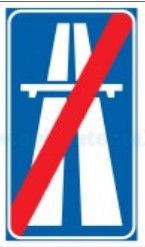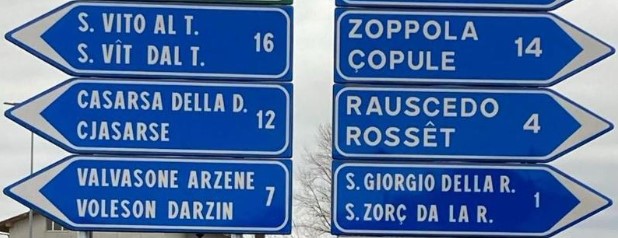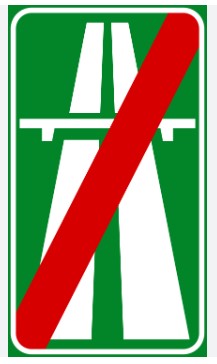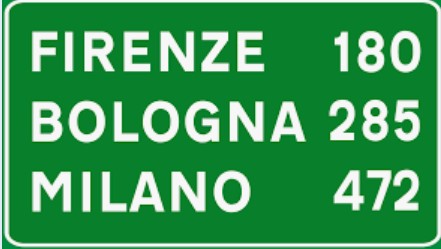Driving Tips in Italy – Consigli per Guidare in Italia
- Maria Scuor
- Apr 7, 2024
- 8 min read
Updated: Nov 10, 2024
Italiano in ogni sezione
Gianni and I have travelled and driven in Italy many times and we are always prepared with our international driver’s license. Something that is a must because it translates our Canadian driver’s license in several languages. You may think you don’t need one, however to rent a vehicle 95% of the time you need one, otherwise they won’t rent you the car. As well, police officers do random document check and will pull you over either in town or on a highway, to review your documents. Thankfully we have had our international license.
Gianni ed io abbiamo viaggiato e guidato in Italia molte volte e siamo sempre preparati con la nostra patente di guida internazionale. Qualcosa che è d'obbligo perché traduce la nostra patente di guida canadese in diverse lingue. Potresti pensare di non averne bisogno, tuttavia per noleggiare un veicolo il 95% delle volte ne hai bisogno, altrimenti non ti noleggeranno l'auto. Inoltre, gli agenti di polizia effettuano controlli casuali dei documenti e ti fermeranno in città o su un'autostrada, per rivedere i tuoi documenti. Per fortuna abbiamo avuto la nostra licenza internazionale.
Here is a photo of CAA International License - Ecco una foto della Licenza Internazionale CAA - IT IS MUST when traveling in Italy
Roundabouts - Rotatorie
When we would spend a few weeks visiting Italy, I never appreciated the driving conditions there. The roundabouts instead of lights were daunting and every time I came to one, it scared the heck out of me. Where was the organization of an intersection with lights, lanes and where green means go and red means stop and be careful with orange? Instead, you have to navigate who goes first into the roundabout and hope no one hits you.
Years ago, in Italy and France they had an unusual priority system where you didn’t have a priority once in the roundabout and you had to give way to the right. That is when it was really confusing to me and when we went round and round many times before getting out of the roundabout. Now when you approach a roundabout, the rule is to give way to the left. If drivers are coming on the left you wait.
Once in the roundabout, now that is a different story. There may be two lanes and what we may think is the logical lane to take to either keep going around or to get out may not be what the Italians are thinking. They tend to be very impulsive and aggressive so you need to always keep your eyes on the road and cars in every direction. Believe me, once you get a handle of this kind of driving, you will hate going back to the lighted intersection. Traffic flow is so much smoother with this system and we get to our destination faster because there is hardly and stop and go.
Interesting fact: France has the most roundabouts in the world with 42,986 which is 65% more than second place United Kingdom with 25,976. Italy comes in third place with 18,172 roundabouts.
Rotatorie
Quando trascorrevamo qualche settimana in Italia, non ho mai apprezzato le condizioni di guida. Le rotatorie al posto delle luci erano scoraggianti e ogni volta che ne arrivavo una, mi spaventavo a morte. Dov'era l'organizzazione di un incrocio con semafori, corsie e dove il verde significa andare e il rosso significa fermarsi e fare attenzione con l'arancione? Invece, devi navigare chi entra per primo nella rotatoria e sperare che nessuno ti colpisca.
Anni fa, in Italia e in Francia c'era un insolito sistema di priorità in cui non avevi la precedenza una volta alla rotatoria e dovevi dare la precedenza a destra. È stato allora che mi ha davvero confuso e che abbiamo girato e rigirato molte volte prima di uscire dalla rotatoria. Ora, quando ci si avvicina a una rotatoria, la regola è quella di dare la precedenza a sinistra. Se gli automobilisti arrivano a sinistra, si aspetta.
Una volta nella rotatoria, ora è tutta un'altra storia. Ci possono essere due corsie e quella che possiamo pensare sia la corsia logica da prendere per continuare a girare o per uscire potrebbe non essere quello che pensano gli italiani. Tendono ad essere molto impulsivi e aggressivi, quindi è necessario tenere sempre gli occhi sulla strada e sulle auto in ogni direzione. Credetemi, una volta che avrete preso confidenza con questo tipo di guida, odierete tornare all'incrocio illuminato. Il flusso del traffico è molto più fluido con questo sistema e arriviamo a destinazione più velocemente perché non c'è quasi nessuno fermata e vai.
Fatto interessante: la Francia ha il maggior numero di rotatorie al mondo con 42.986, il 65% in più rispetto al secondo posto del Regno Unito con 25.976. L'Italia è al terzo posto con 18.172 rotatorie.
Italy’s most famous roundabout is Piazza Venezia in Rome - La rotonda più famosa d'Italia è Piazza Venezia a Roma. Here is a photo by - Ecoo una photo di https://www.freepik.com/author/michelangeloartwork

Street signs – Segnali Stradale
First things first, make sure you follow the speed limit wherever you drive in Italy as they no tolerance for speeding and the electronic policeman that can be anywhere will send you at ticket at home. We have had tickets going 3 km over the speed limit, I will go into more detail in my law enforcement blog.
Next it is important to understand the roads we are travelling on because some are free, others we need to pay a toll while others point us towards historic and tourist attractions. Thankfully they are clearly identified by the colour.
Per prima cosa, assicurati di seguire il limite di velocità ovunque guidi in Italia poiché non tollerano gli eccessi di velocità e il poliziotto elettronico che può essere ovunque ti invierà una multa a casa. Abbiamo avuto multe per 3 km oltre il limite di velocità, entrerò più nel dettaglio nel mio blog delle forze dell'ordine.
Poi è importante capire le strade che stiamo percorrendo, perché alcune sono gratuite, altre dobbiamo pagare un pedaggio e altre ancora ci indicano attrazioni storiche e turistiche. Per fortuna sono chiaramente identificati dal colore.
White signs – identify municipal roads. The speed limit is 50km/h (30 mph) in the cities and towns unless otherwise posted.
Segnaletica bianchi – identifica le strade comunal. Il limite di velocità è di 50 km/h (30 mph) nelle città e nei paesi, se non diversamente indicato.
Blue signs – identify highways. The speed limit is 110km/h (68 mph). These are faster than local roads but are not tolled like freeways therefore busier than freeways.
Segnaletica blu – identifica le strade statali, regionali o provinciali. Il limite di velocità è di 110 km/h (68 mph). Queste sono più veloci delle strade locali, ma non sono a pedaggio come le autostrade, quindi più trafficate delle autostrade
Green signs – identify freeways (autostrada). The speed limit is 130km/h (80 mph) unless otherwise posted. These are toll roads that you pick up a ticket and pay a toll at the toll booth. You need to be careful if you are driving a car without the Telepass transponder. Make sure you don’t go into the Telepass booth as it is specific for cars with the transponder that will automatically open the arm gate as you drive through it. If you don’t have a transponder, you will be stuck there and will have to press the button for assistance.
Segnaletica verde: identifica le autostrade. Il limite di velocità è di 130 km/h (80 mph) se non diversamente indicato. Si tratta di strade a pedaggio che si prendono e si paga un pedaggio al casello. Bisogna fare attenzione se si guida un'auto senza il transponder Telepass. Assicurati di non entrare nella cabina Telepass in quanto è specifica per le auto con il transponder che aprirà automaticamente il cancello del braccio mentre la attraversi. Se non hai un transponder, rimarrai bloccato lì e dovrai premere il pulsante per assistenza.
Brown signs – identify points of interest. These may be historical, artistic, cultural, geographical, recreational and camping points of interest.
Segnaletica marrone – identifica i punti di interesse storico. Questi possono essere punti di interesse storico, artistico, culturale, geografico, ricreativo e di campeggio.

Black signs – identify factories, industrial areas, artisan and shopping centers
Segnaletica nera – identifica fabbriche, stabilimenti, zone industriali, zone artigianali e centri commerciali nelle zone periferiche urbane.

Yellow signs – warn of construction and show diversions or alternate route
Segnaletica gialli – segnali temporanei dovuti alla presenza di cantieri, segnali di preavviso e di direzione relativi a deviazioni
We came across so many road signs along our travels. There were signs that provide direction, warnings, locations, distance, services, territorial, and touristic information. There is no way I can even begin to put them in this blog. However, Wikipedia has a great list of the most important ones we need to know when traveling in Italy and anyone driving in Italy should become familiar with them.
However, driving in the little towns there are some signs that I think are good to mention in case you get stranded and need to ask for help. When you start a new Strada Provinciale (SP) (Provincial Road) the mile marker starts at 0 at the top of the sign with the SP number on the bottom. In this case I’m showing SP 67. Every 200 meters there is a marker in roman numerals showing the location II, IV, VII, VIII until you get to the 1 km marking.
Abbiamo visto molti segni stradali durante i nostri viaggi. C'erano segni che fornivano indicazioni, avvisi, luoghi, distanza, servizi, informazioni territoriali e turistiche. Non c'è modo che io possa nemmeno iniziare a metterli in questo blog. Tuttavia, Wikipedia ha una grande lista dei più importanti che dobbiamo sapere quando si viaggia in Italia e chiunque guidi in Italia dovrebbe familiarizzare con loro.
Tuttavia, guidando nelle piccole città ci sono alcuni segni che penso siano bene menzionare nel caso in cui si rimanga bloccati e si abbia bisogno di chiedere aiuto. Quando si inizia una nuova Strada Provinciale (SP), l'indicatore del chilometri inizia da 0 nella parte superiore del segno con il numero SP in basso. In questo caso sto mostrando SP 67. Ogni 200 metri c'è un indicatore in numeri romani che indica la posizione II, IV, VII, VIII fino ad arrivare alla segnaletica di 1 km.
Most towns have walkways and bike lanes clearly identified. As well as meeting places, such as school bus pick up points or have signs at construction site that tells us what we must do in blue circles, can’t do in red crossed out circles and identifies hazards in yellow triangle. Mirrors are also put up in areas of high risk, so you can see if there is a car coming.
La maggior parte delle città ha percorsi pedonali e piste ciclabili chiaramente identificati. Così come i luoghi di incontro, come i punti di raccolta degli scuolabus o i segni in cantiere che ci dicono cosa dobbiamo fare nei cerchi blu, non possiamo fare nei cerchi rosso barrati e identificano i pericoli nel triangolo giallo. Gli specchietti vengono installati anche nelle aree ad alto rischio, in modo da poter vedere se c'è un'auto in arrivo.
Here are some photos of these signs - Ecco alcune foto di questi segni
.

















































Comments